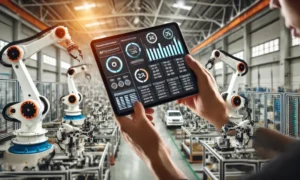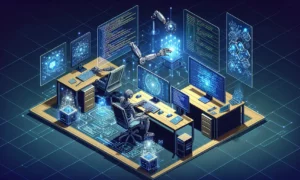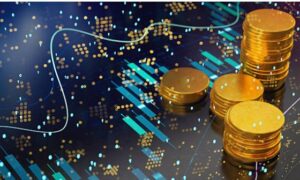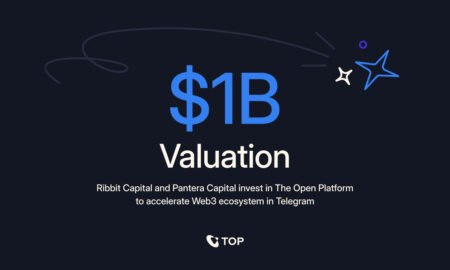The trading floor isn’t what it used to be. Gone are the days of suited traders shouting orders across a crowded room. Today’s trading happens in silence, orchestrated by lines of code and powered by artificial intelligence. This shift isn’t just changing how we trade – it’s transforming who gets to play the game.
The Secret Weapon That’s Making Wall Street Veterans Nervous
Traditional trading firms have always relied on experience and gut instinct. But something different is happening now. Small tech startups are beating the giants at their own game. And they’re doing it with a fraction of the capital.
These startups don’t need massive trading floors or armies of analysts. They need smart programmers and powerful algorithms. The playing field has never been more level. And the old guard is starting to sweat.
Why Your Smartphone Might Be Your Next Trading Terminal
Trading is no longer confined to fancy offices in Manhattan. It’s happening everywhere. Coffee shops in Seattle. Garages in Austin. Apartments in Singapore. The next big trading breakthrough might come from someone coding on their laptop at a local café.
Modern trading platforms are becoming as simple to use as social media apps. And the technology behind them is getting smarter every day. This democratization of trading is opening doors for people who never thought they could compete with Wall Street pros.
The New Money-Making Machines That Run on Python
Programming languages like Python have become the new trading language. Traders who can code have an edge that no amount of traditional market experience can match. They’re building tools that can spot opportunities in milliseconds and execute trades faster than any human could blink.
AI trading bot startups are leading this revolution. They’re creating systems that can analyze market patterns across multiple exchanges simultaneously. These bots don’t get tired, emotional, or distracted. They just keep learning and adapting.
The Hidden Truth About Modern Trading That Nobody’s Talking About
The real revolution isn’t just about speed or automation. It’s about accessibility. Small teams with clever algorithms can now compete with trillion-dollar institutions. The barriers to entry are crumbling. Anyone with coding skills and market knowledge can build their own trading system.
But there’s a catch. The technology is getting more sophisticated. The winners aren’t just the ones with the fastest systems. They’re the ones who can blend technical expertise with market wisdom.
Why Traditional Traders Are Racing to Learn JavaScript
The old ways of trading are fading fast. Even veteran traders are signing up for coding bootcamps. They know that understanding technology isn’t optional anymore – it’s essential for survival in modern markets.
This isn’t just about learning to code. It’s about understanding how modern trading systems think and work. The most successful traders today are hybrids – part financier, part programmer.
The Rise of the Bedroom Trader (And Why Big Banks Are Worried)
Something unprecedented is happening in the trading world. College students are building trading algorithms from their dorm rooms. And some of them are outperforming professional trading desks.
These new traders don’t follow the old rules. They don’t need expensive Bloomberg terminals or fancy degrees. They need creativity, coding skills, and an internet connection. And they’re proving that sometimes that’s enough.
How AI Trading Bots Are Rewriting the Rules of the Game
The second wave of AI trading bot startups like Edge Vaultra is here. And they’re not just copying what big institutions do. They’re inventing entirely new ways to trade. These bots can process news, social media sentiment, and market data in real-time.
The technology is getting smarter and more accessible. Small teams can now build trading systems that would have required millions in investment just a few years ago. This is leveling the playing field in ways nobody expected.
From Git Repositories to Neural Networks
Modern trading tools look nothing like they used to. Instead of stock tickers and trading terminals, today’s traders work with GitHub repositories and neural networks. They’re building systems that can learn and adapt to changing market conditions.
The most powerful trading tools aren’t sold by big vendors anymore. They’re being built by small teams who understand both markets and technology. And they’re often sharing their knowledge openly, accelerating the pace of innovation.
Why Experience Matters Less Than Ever in Modern Trading
Traditional trading experience isn’t what it used to be. Markets move too fast for human intuition alone. The new generation of traders doesn’t need decades of market experience. They need to understand algorithms, data analysis, and machine learning.
This shift is creating opportunities for people who would never have considered trading before. Programmers are becoming traders. Data scientists are building trading systems. The lines between technology and trading are disappearing.
The Future of Trading (And Why It Looks Nothing Like the Past)
The transformation of trading is just beginning. As artificial intelligence and machine learning continue to evolve, the way we trade will keep changing. The next generation of trading systems might be entirely autonomous, making decisions no human could comprehend.
But this isn’t just about technology replacing humans. It’s about technology empowering more humans to participate in markets. The future of trading isn’t just automated – it’s democratized.
What This Means for Tomorrow’s Traders
The path to success in trading is changing. Tomorrow’s successful traders won’t be defined by their pedigree or their access to capital. They’ll be defined by their ability to innovate and adapt to a technology-driven market.
This shift creates opportunities for anyone willing to learn and experiment. The tools and knowledge needed to build sophisticated trading systems are more accessible than ever. The question isn’t whether technology will change trading – it’s who will use that technology to change the game.
In Conclusion
The transformation of trading from a capital-intensive business to a code-intensive one is reshaping the financial world. Small teams with smart algorithms are proving they can compete with the biggest players in finance.
This isn’t just a trend – it’s a fundamental shift in how markets work. As technology continues to evolve, the opportunities for innovation in trading will only grow. The future belongs to those who can combine financial knowledge with technical expertise.



































